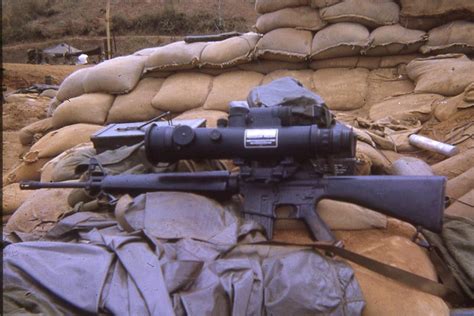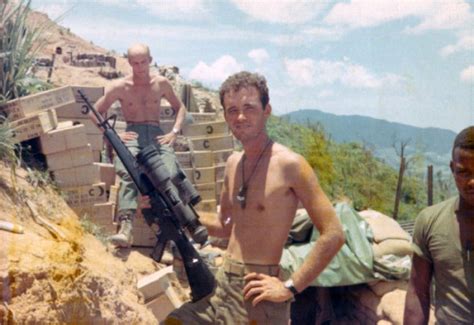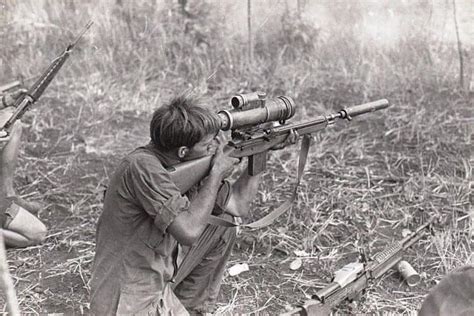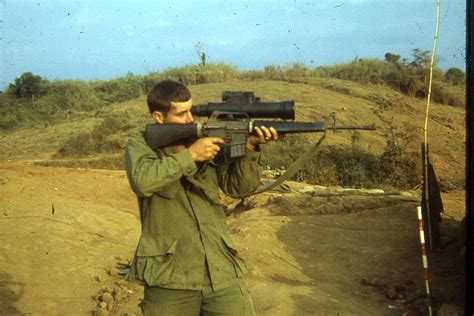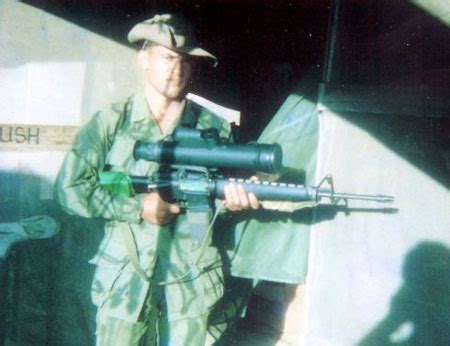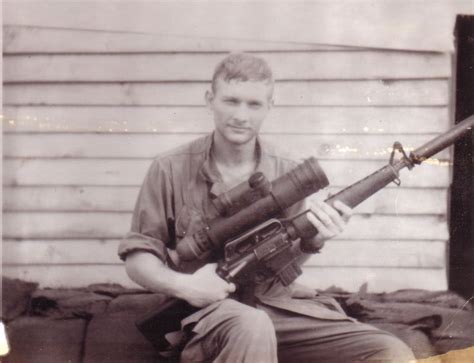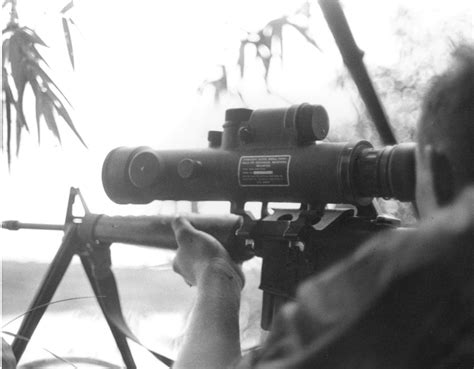Starlight Scope
During the Vietnam War the PVS-2 (ANPVS-2) Starlight Scope was considered a state of the art technology. The AN/PVS-2 starlight scope was, also know by the acronym STANO (Surveillance, Target Acquisition and Night Observation). It was developed by the US Army at the US Army Electronics Command with optical support of the Wollensack Optical Company, as its prime contractor. It weighed just under 6lbs (5.94lbs) and required no external battery pack. Some sources list the weight of the unit as 6.25lbs without its carrying case.
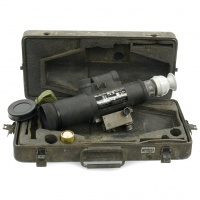
Original U.S. Army Vietnam Era AN/PVS-2B Starlight Night Vision Scope with Transit Chest
The scope first entered service at the height of the Vietnam War and was used primarily among Soldiers and Marines in their patrol bases. It was considered a military top secret technology at the time and each unit had to be "checked out" before use so and accounted for to ensure its return so as to avoid one falling into enemy hands.
The Starlight Scope is a passive night vision design using Image Intensification. As such it did not need to emit infrared light rather it relied on incoming light that was then amplified using a photocathode and an image intensifier tube in order to significantly increase image contrast. They are considered a Gen 1 or Generation 1 night vision technology. Clear nights with star or moon light are optimal, while a cloudy night with no moon far from a city renders them ineffective.
The AN/PVS-2B was intended as a rifle scope, and has a standard mount on the bottom for attaching to rails, such as used on the M-16 rifle. Soldiers complained that the scope was too heavy and bulky on the rifle and would not hold zero after several shots. They were intended for sniper use but in practicality were more useful for spotting enemy positions. Reports of their practical use vary depending on what veteran you ask.
It is said that the AN/PVS-2 was not a practical sighting device and more useful for observation. The scope itself did have a slight greenish glow where the soldier looked into the lens and thus could expose the user to enemy attention even though it was a passive night vision scope.
The scope featured 4x magnification and a field of view of 6.5 degrees. Filters were be used with the scope to reduce glare under varying conditions. Units equipped with Starlight Scopes conducted night patrols and executed night ambushes. This gave the combat soldier the ability to be more aggressive at night thus attacking and disrupting Viet Cong supply lines and camps under the cover of darkness.
Of the many stories by Vietnam War Veterans involving night vision is from one particular man and his use of a Starlight Scope in combat. This is a summary from the account of Sergeant First Class (SFC) Bert Waldron. Waldron is respected as a deadly accurate sniper during the war and is known to have used the Starlight Scope to detect and eliminate enemy forces on a dark night to identify a seventeen man Viet Cong patrol and engage them in combat. Despite the less than ideal conditions for use of the Starlight Scope, Waldron was able to neutralize eight Viet Cong enemy soldiers with surgical precision resulting in the rest running away into the cover of the jungle. This example is one of several accounts where the new, at the time, Generation 1 night vision technology gave United States combat forces a tactical advantage during a difficult war.
